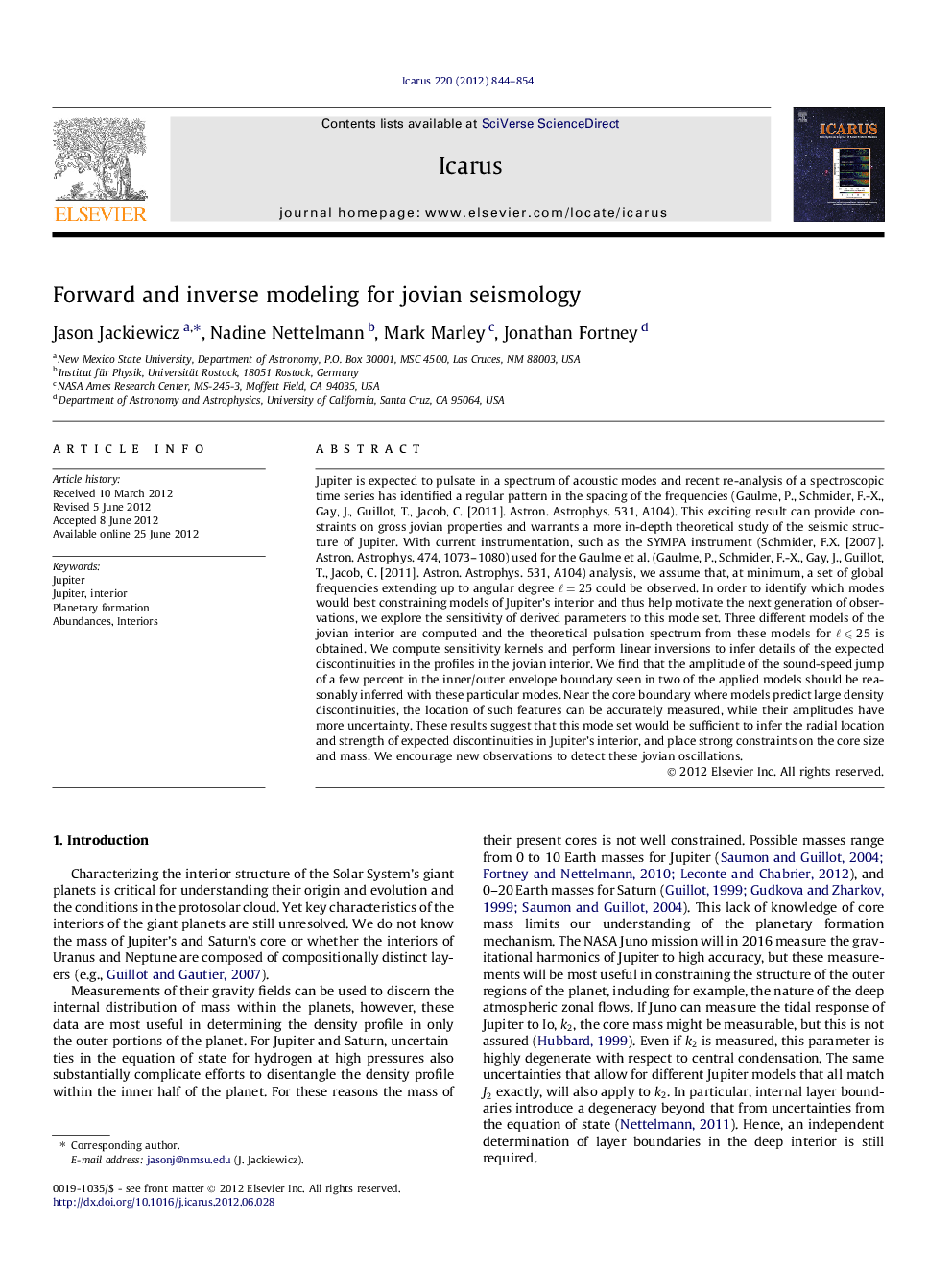| Article ID | Journal | Published Year | Pages | File Type |
|---|---|---|---|---|
| 1773446 | Icarus | 2012 | 11 Pages |
Jupiter is expected to pulsate in a spectrum of acoustic modes and recent re-analysis of a spectroscopic time series has identified a regular pattern in the spacing of the frequencies (Gaulme, P., Schmider, F.-X., Gay, J., Guillot, T., Jacob, C. [2011]. Astron. Astrophys. 531, A104). This exciting result can provide constraints on gross jovian properties and warrants a more in-depth theoretical study of the seismic structure of Jupiter. With current instrumentation, such as the SYMPA instrument (Schmider, F.X. [2007]. Astron. Astrophys. 474, 1073–1080) used for the Gaulme et al. (Gaulme, P., Schmider, F.-X., Gay, J., Guillot, T., Jacob, C. [2011]. Astron. Astrophys. 531, A104) analysis, we assume that, at minimum, a set of global frequencies extending up to angular degree ℓ=25ℓ=25 could be observed. In order to identify which modes would best constraining models of Jupiter’s interior and thus help motivate the next generation of observations, we explore the sensitivity of derived parameters to this mode set. Three different models of the jovian interior are computed and the theoretical pulsation spectrum from these models for ℓ⩽25ℓ⩽25 is obtained. We compute sensitivity kernels and perform linear inversions to infer details of the expected discontinuities in the profiles in the jovian interior. We find that the amplitude of the sound-speed jump of a few percent in the inner/outer envelope boundary seen in two of the applied models should be reasonably inferred with these particular modes. Near the core boundary where models predict large density discontinuities, the location of such features can be accurately measured, while their amplitudes have more uncertainty. These results suggest that this mode set would be sufficient to infer the radial location and strength of expected discontinuities in Jupiter’s interior, and place strong constraints on the core size and mass. We encourage new observations to detect these jovian oscillations.
► Jupiter is expected to oscillate in a spectrum of acoustic modes. ► These oscillations can help greatly improve and constrain interiors models. ► We use new models of Jupiter to compute Jupiter’s theoretical oscillation spectrum. ► Inverse modeling shows that important interior boundary layers are within reach. ► New observations to detect Jupiter’s pulsation frequencies are strongly encouraged
